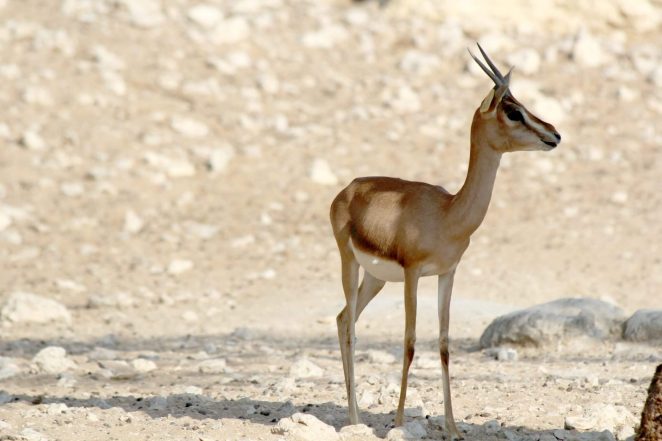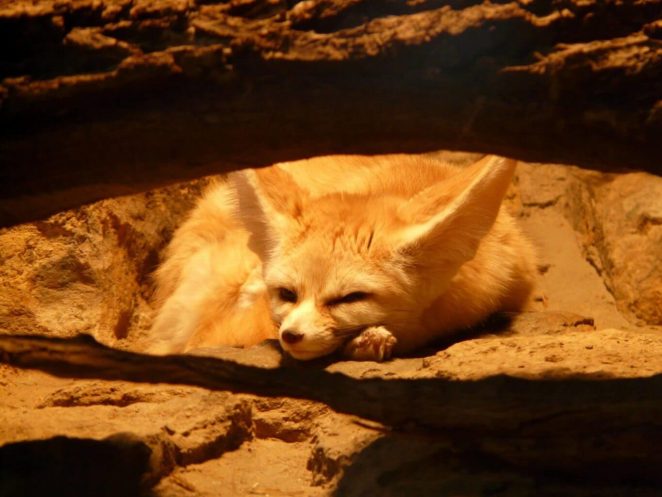Mammals and Desert Ecology: What Mammals Live in Deserts and How do They Survive?
Deserts form when there is less than 25cm (10 inches) of rainfall in a year. Semi-deserts are those that receive less than 40cm (16 inches) of rainfall in a year. Desert regions around the world can be found in parts of Australia, south-western USA, central Asia, China, South America and southern Africa. The most famous and largest desert is, of course, the Sahara Desert found in North Africa.
Overview of Desert Ecology
Desert areas are arid zones due to minimal rainfall. The reason for the lack of rainfall is due to their proximately to tropical zones. Being beside a tropical zone means deserts get little moisture as winds have already dumped their water on the forest regions. This is how the deserts in Australia and southern Africa were formed. Deserts such as the Gobi Desert in China are formed because they are far away from the ocean. The Sahara desert is on the edge of a tropical zone as well as being far from the ocean. Conditions in the desert are harsh. Temperatures during the day are scorching reaching over 40 degrees Celsius (104 Fahrenheit) and water evaporation is high. During the evening the temperature drops as the sun go down and can be near freezing.
Desert plants such as cacti have adaptations to deal with minimal water and to conserve water they do get. These adaptations include drought resistant seeds, reduced foliage and a waxy coating which helps minimize water loss. Desert plants have pores in their leaf or stem epidermis called stomata. Plants are able to open and close their stomata to maximize water gain when it’s available and minimize water loss in dry conditions.
Overview of Desert Mammals
There is huge biodiversity in deserts as there is in any other biome. Some of the mammals found in deserts include:
• Fennec Fox.
• Kangaroo rat.
• Camel.
• Coyote.
• Jack Rabbit.
• Dingo.
• Arabian oryx.


"use strict";
var adace_load_693c88df68dcd = function(){
var viewport = $(window).width();
var tabletStart = 601;
var landscapeStart = 801;
var tabletEnd = 961;
var content = '%3Cdiv%20class%3D%22adace_adsense_693c88df68d74%22%3E%3Cscript%20async%20src%3D%22%2F%2Fpagead2.googlesyndication.com%2Fpagead%2Fjs%2Fadsbygoogle.js%22%3E%3C%2Fscript%3E%0A%3Cstyle%3E%0A%40media%28max-width%3A%20600px%29%20%7B.adace_adsense_693c88df68d74%20%7Bwidth%3A300px%3B%20height%3A250px%7D%7D%0A%40media%28min-width%3A%20601px%29%20%7B.adace_adsense_693c88df68d74%20%7Bwidth%3A728px%3B%20height%3A90px%7D%7D%0A%40media%28min-width%3A%20801px%29%20%7B.adace_adsense_693c88df68d74%20%7Bwidth%3A728px%3B%20height%3A90px%7D%7D%0A%40media%28min-width%3A%20961px%29%20%7B.adace_adsense_693c88df68d74%20%7Bwidth%3A728px%3B%20height%3A90px%7D%7D%0A%3C%2Fstyle%3E%0A%09%09%3Cins%20class%3D%22adsbygoogle%22%0A%09%09style%3D%22display%3Ablock%3Bwidth%3A728px%3Bheight%3A90px%3B%22%0A%09%09data-ad-client%3D%22ca-pub-2390509622267115%22%0A%09%09data-ad-slot%3D%227101896489%22%0A%09%09%0A%09%09%3E%3C%2Fins%3E%0A%09%09%3Cscript%3E%28adsbygoogle%20%3D%20window.adsbygoogle%20%7C%7C%20%5B%5D%29.push%28%7B%7D%29%3B%3C%2Fscript%3E%3C%2Fdiv%3E';
var unpack = true;
if(viewport
})(jQuery);


